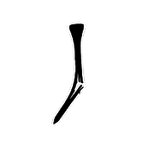How Cameron Young Approaches Difficult Wedge Shots (w/ Me and My Golf)
24 minLearn how different lie conditions impact launch, spin, strike location, and trajectory, and see the adjustments Cameron makes to stay consistent under pressure.
Check out Cameron's full setup: https://www.youtube.com/watch?v=nPzXKHI7SuE
» Subscribe to Titleist: https://www.youtube.com/@titleist?sub_confirmation=1



















